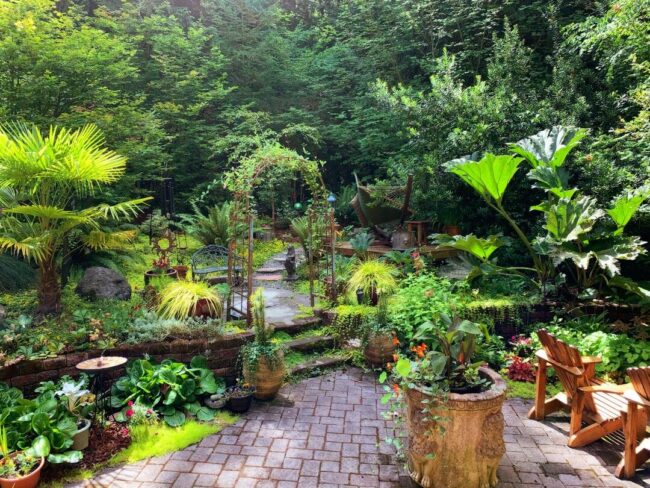
Spending time outdoors isn’t just a summertime activity anymore. With thoughtful planning and design, your backyard, patio, or deck can become a cozy extension of your home all year long. More homeowners are seeking ways to make their outdoor spaces livable no matter the season, whether it’s a shaded escape from the summer sun or a warm nook to sip coffee on chilly mornings. The key lies in blending comfort, practicality, and design in a way that suits your lifestyle. From clever layouts to all-weather furnishings, a well-designed outdoor area can easily rival any room inside the house.
Outdoor living is no longer a luxury; it’s a lifestyle. And with the right approach, you can enjoy fresh air and open skies even when the weather isn’t perfect.
Start with Shelter: Protection from Sun, Rain, and Wind
A well-designed outdoor space needs some kind of covering. Without it, you’re constantly at the mercy of the elements. Whether it’s a solid patio cover, a retractable awning, or a stylish pergola with vines creeping along the beams, having overhead protection makes all the difference.
Not only does a cover shield you from harsh sunlight or unexpected rain showers, it also helps define the space and give it a sense of enclosure. This is especially helpful in areas with strong sun exposure or frequent weather changes. Consider materials that can withstand your local climate, and remember that permanent structures offer more year-round protection compared to temporary solutions like umbrellas or fabric canopies.
Comfort Is Key: Furniture That Invites You to Stay
Outdoor furniture has come a long way from plastic chairs and fold-out tables. Today’s designs offer plush cushions, ergonomic shapes, and durable materials that look as good as they feel. To make your space truly inviting, opt for weather-resistant furniture with soft textures and layered accessories like throw pillows and blankets.
Arrange seating to promote conversation or relaxation, whether it’s around a fire pit or facing a garden view. Having a variety of options, a couple of lounge chairs, a dining table, maybe a hammock, gives you flexibility throughout the year. For colder months, you might even consider heated seat pads or adding outdoor-safe rugs for a warmer feel underfoot.
Lighting Sets the Mood and Extends Your Hours
Lighting can transform an outdoor space from functional to magical. In the evening, string lights, lanterns, and sconces add a cozy glow that encourages you to linger longer outside. More than just aesthetic, good lighting improves safety and lets you use the space well after sunset.
Solar-powered options are great for energy savings, while low-voltage lighting can highlight features like walkways, plants, or water fixtures. Try layering different light sources, some soft, some task-specific, to adapt the space for reading, dining, or entertaining.
Temperature Control: Staying Comfortable Year-Round
One of the biggest challenges in creating a year-round outdoor space is temperature. Summers can be scorching, and winters, even in mild climates, can send you back indoors. The solution? Control your microclimate.
For hot weather, consider ceiling fans, misting systems, or shade structures with built-in ventilation. In colder months, fire pits, outdoor heaters, and even built-in fireplaces provide warmth and ambiance. Some people even go further, installing infrared heat panels in covered areas or enclosing spaces with clear vinyl curtains to keep warmth in while still feeling outdoors.
These additions allow you to enjoy your patio even on chilly evenings or during early spring when it’s not quite warm yet but still nice enough to sit outside.
Designing for Function: Layouts that Make Sense
How you arrange your outdoor space has a big impact on how you use it. Think about traffic flow, privacy, and how different elements relate to one another. For instance, keep dining areas close to the kitchen or grill, and place cozy seating areas in quieter corners for reading or conversation.
Create “zones” for different activities: a place to eat, a place to relax, maybe even a spot for kids to play or a space for yoga. Using planters, screens, or outdoor rugs can help define these areas without building walls.
By planning your layout intentionally, you avoid the common pitfall of random furniture scattered around with no purpose. Instead, each part of the space feels thought-out and welcoming.
The Right Materials Make All the Difference
Outdoor spaces are exposed to more wear and tear than anything inside the house. So choosing materials that can handle sun, rain, and temperature shifts is essential. Look for furniture with rust-proof frames, fade-resistant fabrics, and cushions that dry quickly.
For surfaces, stone, concrete, and composite decking hold up better than untreated wood or cheaper materials. Even textiles matter, opt for outdoor-rated fabrics that resist mildew and are easy to clean.
These choices might cost a bit more upfront, but they’ll last longer and save you the hassle of constant upkeep or replacements.
Adding Personality Through Decor
Just like any room inside, an outdoor space should reflect your style. Maybe that means adding pops of color through cushions and plant pots, or maybe it’s more neutral and zen with minimal lines and calming tones.
Accessories like art, sculptures, hanging planters, and water features give character and life to your patio. You don’t need to overdo it. Even a few thoughtful touches can make a patio feel curated instead of generic.
Some homeowners in areas like Las Vegas take advantage of covered spaces to keep decor protected from the intense desert sun. If you’re working on an outdoor upgrade and want a custom patio solution, it’s worth checking out providers like Ultra Patio Covers Las Vegas, who specialize in building outdoor structures that handle harsh climates with style and durability.
Don’t Forget the Greenery
No outdoor space feels complete without a bit of green. Plants add life, color, and even shade. Depending on your climate, you can use potted plants, vertical gardens, or raised beds to add natural texture and interest.
If you live somewhere with hot summers, pick drought-tolerant varieties or native species that thrive with less watering. In cooler regions, evergreens and winter berries can add year-round interest. Even a few pots of herbs or a small citrus tree can make the space more interactive and refreshing.
Keep Maintenance in Mind
A comfortable space isn’t one you constantly have to clean or repair. Low-maintenance choices make outdoor living more enjoyable. Choose materials that don’t need sealing every season, and design your space to be easy to sweep or rinse off.
Store cushions or cover them when not in use, and make sure lighting and electrical setups are weather-rated and safe. The less effort it takes to maintain your outdoor retreat, the more likely you’ll use it regularly.
Final Thoughts: Make It Yours
There’s no one-size-fits-all formula for a great outdoor space. What works for a coastal deck might not suit a suburban backyard or an urban balcony. But the goal is the same: creating an area where you feel comfortable, relaxed, and at home, no matter the season.
Think about how you want to live outdoors and build from there. Whether it’s early morning coffee wrapped in a blanket or a lively evening meal with friends under twinkling lights, the right setup makes outdoor time something you look forward to every day of the year.
